A few weeks ago, I visited Casa Mila, also known as La Pedrera in Barcelona Spain, which in 1984 was declared a World Heritage site by UNESCO. It was the last civil work designed by renowned architect Antoni Gaudi, who was the best-known practitioner of Catalan Modernism. When visiting La Pedrera, I walked onto the stepped roof called “the garden of warriors”; called so because of the chimneys which appear to protect the sky lights, and discovered to my disappointment that due to the size of the crowd and the presence of a fence, I wouldn’t be able to photograph the entire architecture of the roof in a single shot.
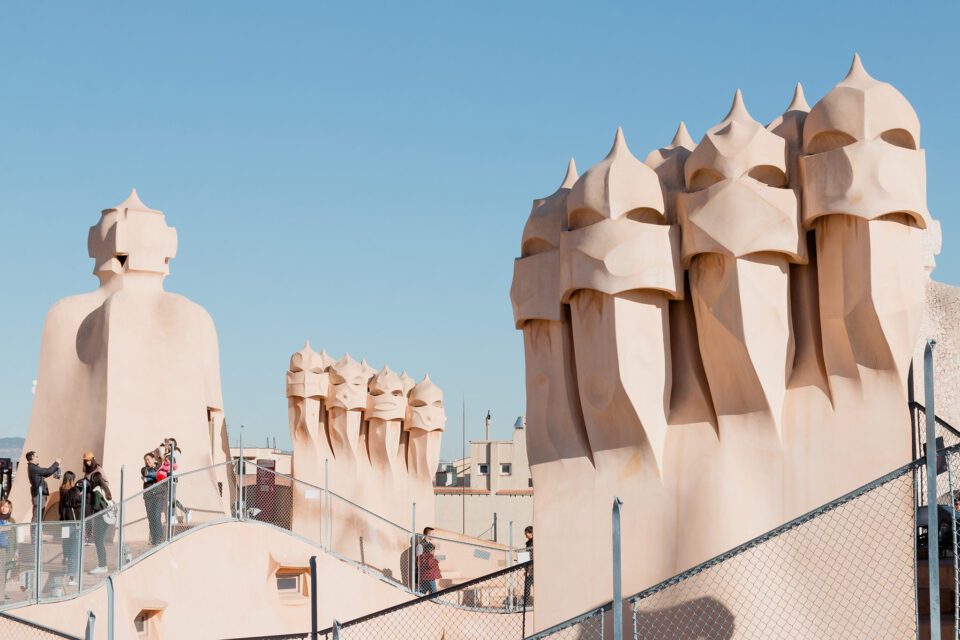 Canon EOS 70D + 17-50mm @ 40mm, ISO 100, 1/400, f/8.0قبل بضعة أسابيع، قمت بزيارة كازا ميلا، المعروفة أيضًا باسم لا بيدريرا في برشلونة بإسبانيا، والتي تم إعلانها في عام 1984 موقعًا للتراث العالمي من قبل اليونسكو. كان هذا آخر عمل مدني صممه المهندس المعماري الشهير أنتوني غاودي، الذي كان أشهر ممارس للحداثة الكاتالونية. عند زيارتي لا بيدريرا، مشيت على السطح المدرج المسمى “حديقة المحاربين”؛ سميت بذلك بسبب المداخن التي تبدو وكأنها تحمي أضواء السماء، واكتشفت بخيبة أمل أنه بسبب حجم الحشد ووجود سياج، لن أتمكن من تصوير الهندسة المعمارية للسقف بالكامل في طلقة واحدة.
Canon EOS 70D + 17-50mm @ 40mm, ISO 100, 1/400, f/8.0قبل بضعة أسابيع، قمت بزيارة كازا ميلا، المعروفة أيضًا باسم لا بيدريرا في برشلونة بإسبانيا، والتي تم إعلانها في عام 1984 موقعًا للتراث العالمي من قبل اليونسكو. كان هذا آخر عمل مدني صممه المهندس المعماري الشهير أنتوني غاودي، الذي كان أشهر ممارس للحداثة الكاتالونية. عند زيارتي لا بيدريرا، مشيت على السطح المدرج المسمى “حديقة المحاربين”؛ سميت بذلك بسبب المداخن التي تبدو وكأنها تحمي أضواء السماء، واكتشفت بخيبة أمل أنه بسبب حجم الحشد ووجود سياج، لن أتمكن من تصوير الهندسة المعمارية للسقف بالكامل في طلقة واحدة.
كاميرا Canon EOS 70D + 17-50 ملم عند 40 ملم، ISO 100، 1/400، f/8.0
As seen above; the people, the fence and the buildings behind ruin the organic and looping arches of Gaudi’s beautiful architecture piece. While I realized that photographing Gaudi’s work in its full content will be impossible, I decided to start separating the intricate and exclusive aspects of his work in such a manner that one would appreciate the separate pieces, just as much as the whole.
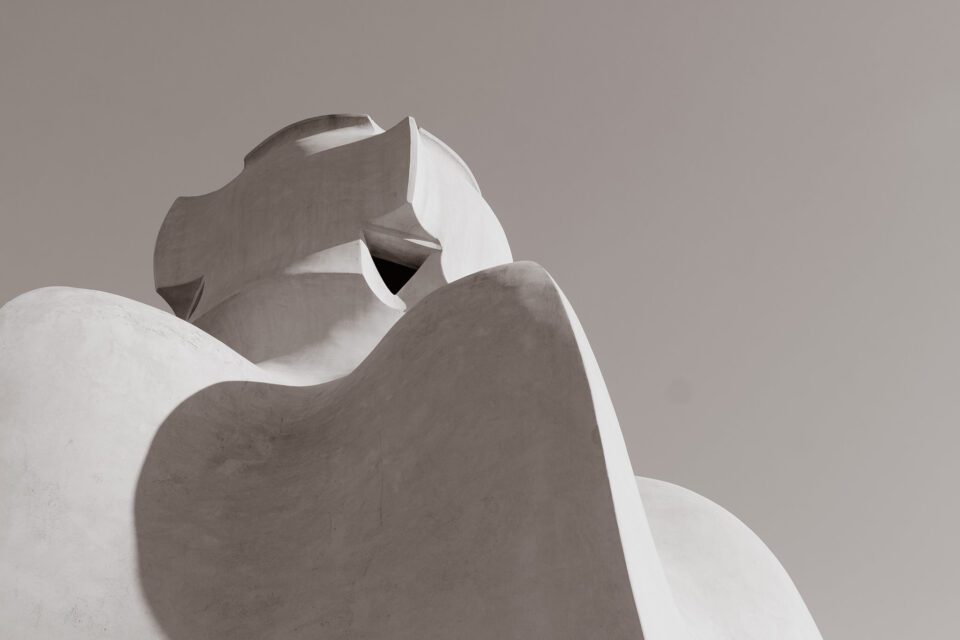 Canon EOS 70D + 17-50mm @ 30mm, ISO 100, 1/640, f/5.6
Canon EOS 70D + 17-50mm @ 30mm, ISO 100, 1/640, f/5.6
كما رأينا أعلاه؛ الناس والسياج والمباني الموجودة خلفهم يدمرون الأقواس العضوية والمتعرجة لقطعة الهندسة المعمارية الجميلة لغاودي. وبينما أدركت أن تصوير أعمال غاودي بمحتواها الكامل سيكون مستحيلاً، قررت أن أبدأ في فصل الجوانب المعقدة والحصرية لعمله بطريقة تجعل المرء يقدر القطع المنفصلة، تمامًا كما هو الحال مع الكل.
The first photo I took was from a low angle and I tried to position the structure in the top left part of the image following the rule of thirds and it was great that the curved lines of the structure lead one’s eyes directly to the top.
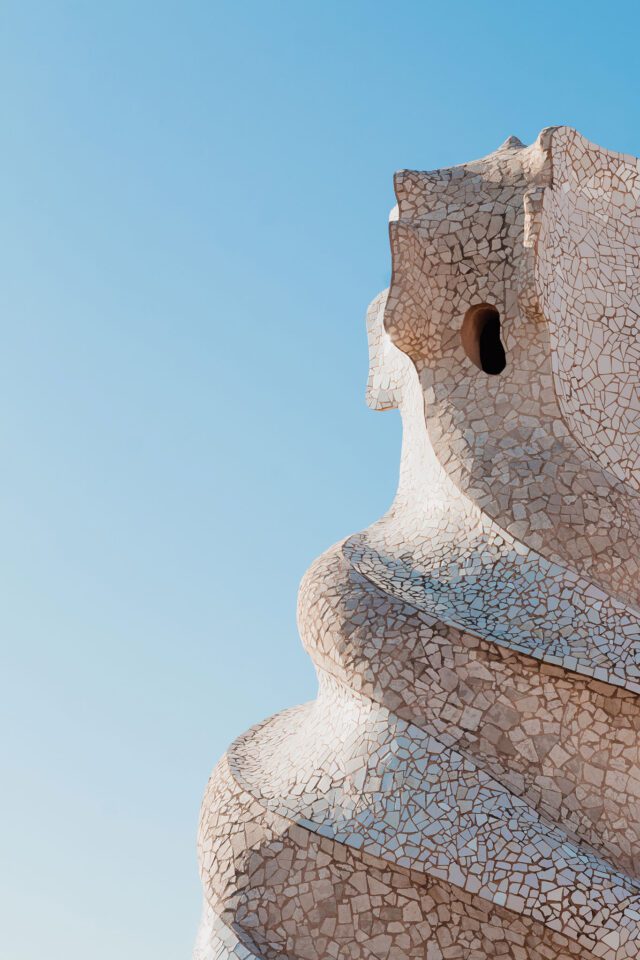 Canon EOS 70D + 17-50mm @ 50mm, ISO 100, 1/250, f/8.0
Canon EOS 70D + 17-50mm @ 50mm, ISO 100, 1/250, f/8.0
كانت الصورة الأولى التي التقطتها من زاوية منخفضة وحاولت وضع الهيكل في الجزء العلوي الأيسر من الصورة باتباع قاعدة الأثلاث، وكان من الرائع أن الخطوط المنحنية للهيكل تقود عين المرء مباشرة إلى الأعلى.
For my second image, I noticed this chimney which was facing in the direction of the sun. I had to zoom in at 50mm and have my hand covering the top part of my lens to minimize any lens flare, since I didn’t have a lens hood that day. I really loved the intricate mosaic and the perfect spirals around the structure. It reminded me about the Fibonacci spiral and the picture of the bicycle riding man by Henry Cartier-Bresson. I later found out that the reason why it is twisted is so that the smoke would come out better.
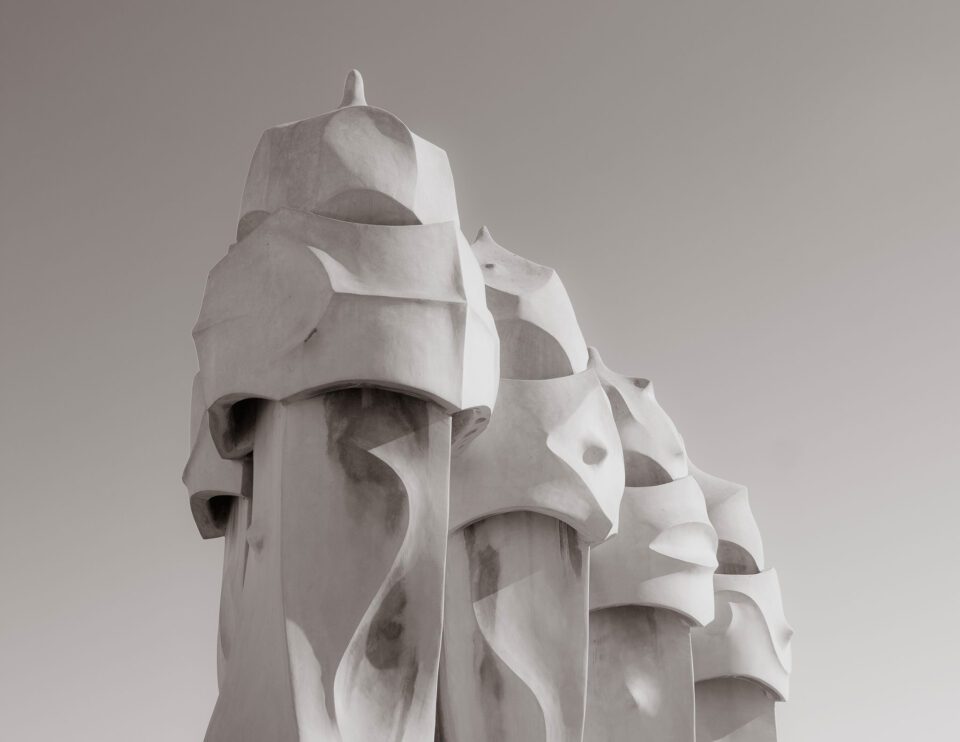 Canon EOS 70D + 17-50mm @ 30mm, ISO 100, 1/800, f/5.6
Canon EOS 70D + 17-50mm @ 30mm, ISO 100, 1/800, f/5.6 Canon EOS 70D + 17-50mm @ 28mm, ISO 100, 1/400, f/8.0
Canon EOS 70D + 17-50mm @ 28mm, ISO 100, 1/400, f/8.0
بالنسبة لصورتي الثانية، لاحظت هذه المدخنة التي كانت تواجه اتجاه الشمس. اضطررت إلى تكبير الصورة بمقدار 50 ملم ووضع يدي على الجزء العلوي من العدسة لتقليل أي توهج للعدسة، حيث لم يكن لدي غطاء عدسة في ذلك اليوم. لقد أحببت حقًا الفسيفساء المعقدة واللوالب المثالية حول الهيكل. لقد ذكّرتني بدوامة فيبوناتشي وصورة راكب الدراجة التي رسمها هنري كارتييه بريسون. اكتشفت لاحقًا أن سبب التواءه هو أن الدخان سيخرج بشكل أفضل.
كاميرا EOS 70D من Canon + 17-50 مم عند 30 مم، ISO 100، 1/800، f/5.6 كاميرا EOS 70D من Canon + 17-50 مم عند 28 مم، ISO 100، 1/400، f/8.0
My favorite photograph is one that I took of the ventilation shaft. It is quite simple in composition and it reminded me of “The Scream” by Edward Munch, because the top holes looked like eyes and the bottom one like the mouth.
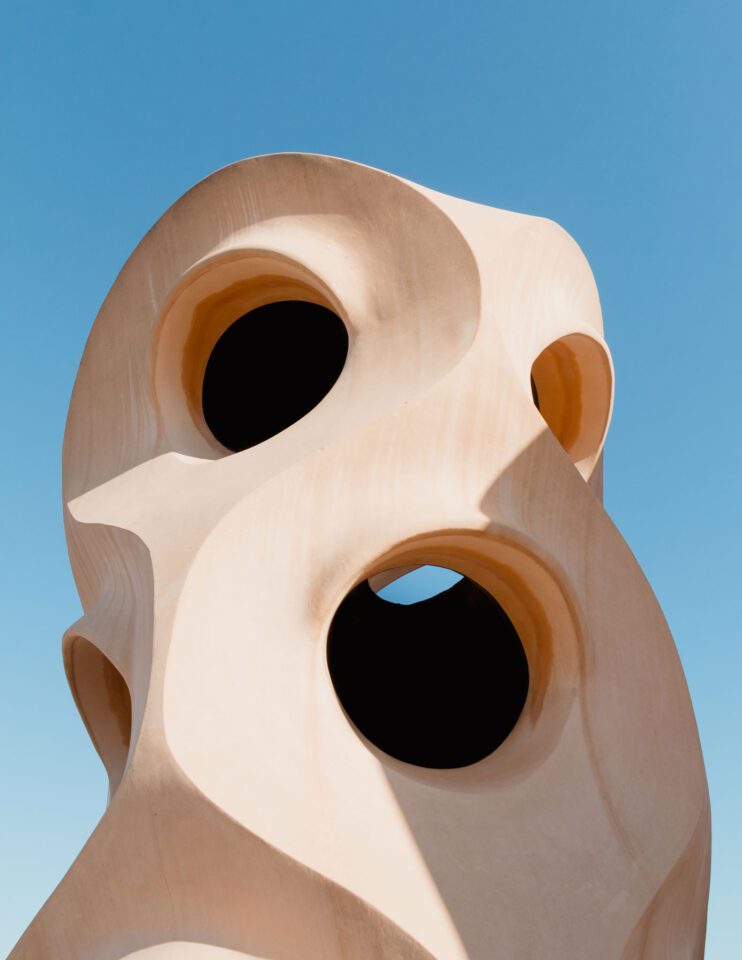 Canon EOS 70D + 17-50mm @ 17mm, ISO 100, 1/320, f/8.0
Canon EOS 70D + 17-50mm @ 17mm, ISO 100, 1/320, f/8.0
In conclusion, it is quite hard to photograph places that are renowned for their architecture without having people in your frame or any other distractions such as a modern fence. However, my own takeaway was that if you can’t be the first one to arrive at the desired photographic location, then concentrating on the details is just as important and can be just as creative and satisfying.
الصورة المفضلة لدي هي تلك التي التقطتها لعمود التهوية. إنها بسيطة للغاية في تكوينها وقد ذكرتني بلوحة “الصرخة” لإدوارد مونك، لأن الفتحات العلوية كانت تشبه العيون والفتحة السفلية تشبه الفم.
كاميرا Canon EOS 70D + 17-50 ملم عند 17 ملم، ISO 100، 1/320، f/8.0
في الختام، من الصعب جدًا تصوير الأماكن المشهورة بهندستها المعمارية دون وجود أشخاص في إطارك أو أي عوامل تشتيت أخرى مثل السياج الحديث. ومع ذلك، كانت استنتاجاتي الخاصة هي أنه إذا لم تتمكن من أن تكون أول من يصل إلى موقع التصوير الفوتوغرافي المطلوب، فإن التركيز على التفاصيل لا يقل أهمية ويمكن أن يكون بنفس القدر من الإبداع والمرض.

